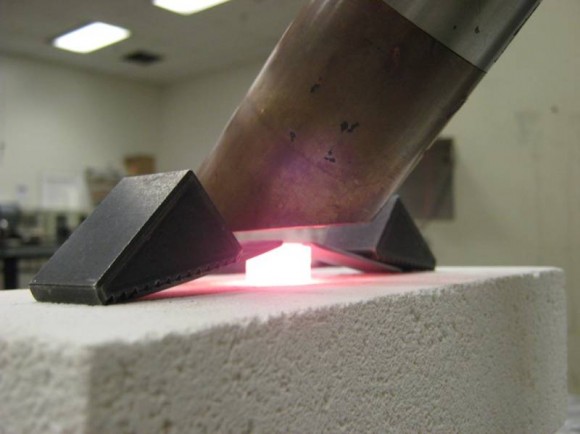
We receive many questions about the difference between soldering and brazing. They are very similar joining techniques, both involving the melting of a filler metal to join two or more components without melting the base material of the components. The American Welding Society (AWS) defines brazing as such a process which involves a filler metal which has a liquidus above 450°C (842°F). Soldering, on the other hand, involves filler metals with a liquidus of 450°C or below.
The issue is further confused by the use of such terms as “silver solder.” This is a misnomer, because silver-based alloys all melt well above 450°C and are therefore clearly brazing filler metals. The proper term for all alloys used for brazing, including silver-based alloys, is “brazing filler metals.” AWS has developed a designation system for brazing filler metals which uses the primary element(s) and a number for unique compositions of brazing filler metals. All designations begin with a “B” for “brazing”. The silver-based alloys are thus designated BAg-x, where x is a number corresponding to a certain alloy composition. BAg-1 has a nominal composition of 45%Ag, 15%Cu, 16%Zn, 24%Cd. BAg-34 contains nominally 38%Ag, 32%Cu, 28%Zn, 2%Sn. Other brazing filler metal families include aluminum-silicon filler metals (BAlSi-x), magnesium filler metals (BMg-x), copper, copper-zinc and copper-phosphorus filler metals (BCu-x, RBCuZn-x, and BCuP-x, respectively), nickel and cobalt-based filler metals (BNi-x and BCo-x, respectively) and gold-based filler metals (BAu-x). Titanium, palladium, platinum and other metals can also be used as brazing filler metals. Brazing is used in numerous automotive applications, jet engines, cookware and utensils, and HVAC systems, to name a few.
Soldering, in addition to having a lower processing temperature, typically results in a lower-strength joint than a brazed joint. For many applications, this is suitable and even desirable. The shear strength of brazed joints typically exceeds that of soldered joints by a factor of five. High heat input can damage sensitive electronics or small components.
Figure: Laser brazing of silicon carbide (SiC)
Heat for either soldering or brazing can be applied in a number of ways; through flames, by resistive heating, by inductive heating, by use of a laser, by combustion and subsequent radiant heating, etc. Both soldering and brazing can be done in open air (usually with a flux to reduce surface oxides and enable wetting and flow of the solder or braze filler metal) or in protective atmospheres (e.g. inert, vacuum, or active atmosphere). Both techniques can be used to join many metals and metallic alloys, ceramics, and composite materials, to like and dissimilar materials.
So should you solder it or braze it?
The answer to that depends on many factors including the service loading and temperature, to name two. Many substrates are damaged by the high temperatures required by brazing. Wettability of the substrate by either the solder or brazing filler metal is another key consideration in selecting the appropriate process. The ability to remove flux residue can be an important factor such as in certain HVAC and other fluid transport systems; closed loop systems which cannot be readily cleaned after joining must often be brazed or soldered in vacuum or under a protective atmosphere, or a self-fluxing filler metal such as the copper-phosphorus alloys (BCuP-x) in copper-based assemblies must be used. Certain ‘no-clean fluxes’ leave minimal residue after joining, but hardened residues can create abrasive wear situations in tight clearance moving components, or can hydrolyze and create corrosive conditions.
